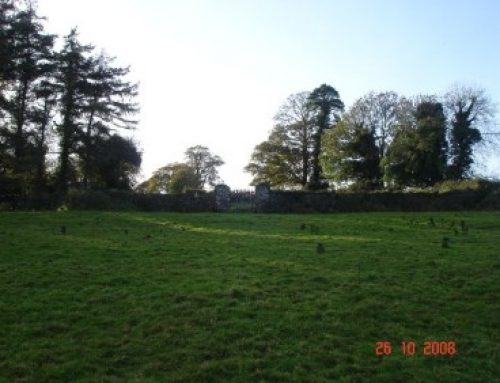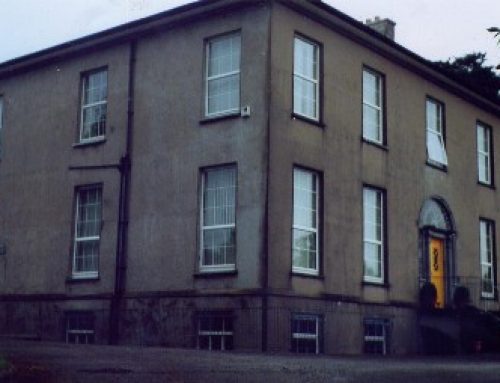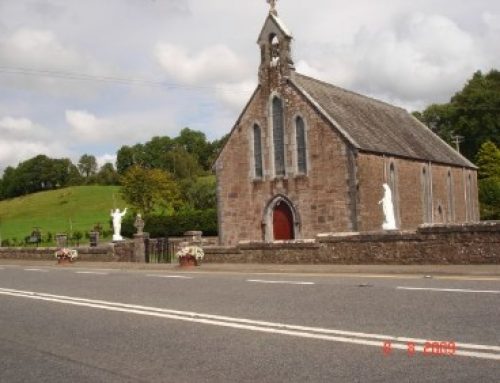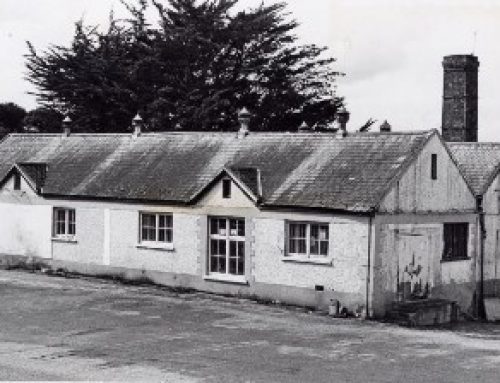It can be truly said that there is history in every corner of every field and in every turn of the road. Every house has a tale to tell. Tales of characters and events abound in every locality, many embellished by retelling and the passing of time. Sadly, the tradition of relating the deeds of our ancestors and the happenings of yesteryear is a pastime that has almost disappeared. Television has killed the art of conversation and no longer do the mundane affairs of the local neighbourhood occupy the mind or serve as the topic of discourse. The mass media brings world events to our sitting room and instant entertainment is available at the flick of a switch.
Consequently, in order to preserve the remnants of the past which still remain in the minds of the older generation, there is an onus on us to record what information is available. Listed hereunder are some of the prominent historical landmarks of the Birdhill area, with a brief description of their significance. A location map in the Village Green, adjacent to the Coopers Bar, will help with directions.
1. Carrigeen Rock: Site of mythical encounter between Oisín of the Fianna and a large bird which was causing great destruction in the area. Hence the name Birdhill
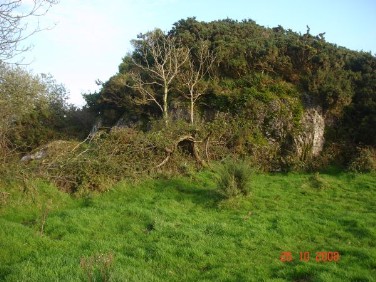
Carrigeen is an outcrop of rock on top of the hill to the south of Birdhill Village.
It is visible from Twiss Hill on the Newport Road
2. Twiss Remnants:
- Birdhill House, home of the Twiss family, owners of the lands of Birdhill from 1824.
- Grave of Bob Twiss (1856-1917), Chapel Hill.
- Parteen House, original home of the Twiss Family
- (See separate article on The Twiss Family)
3. Courtwood: Home of the Ormsby family, owners of the lands of Birdhill in the early 1800’s. Courtwood is adjacent to the Kyle graveyard.
4. Ormsby Bible School: House on top of Twiss Hill opened as a Bible School in 1824 and which was the centre of national controversy in 1827 when families were evicted from the Ormsby Estate for refusing to attend the school.
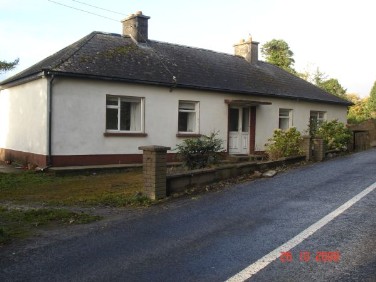
The building which formerly housed the Ormsby Bible School
5. Kyle Graveyard: Former cemetery for the Birdhill area. Given by the Twiss family as a burial ground in 1820. Was part of the original Ormsby mansion. Much used for burial during the famine.
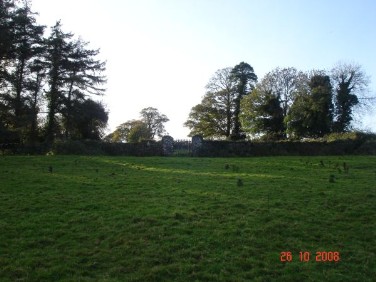
Kyle graveyard is located a
few hundred yards north of
The Church of Our Lady of
the Wayside. Just a few
graves are marked by
headstones or crosses
7. Antiquities of Kilcommenty:
- Kilcommenty Church, former parish church for Birdhill, built in 1470. Adjoining graveyard still used by families in the Cragg area.
- St. Comenath’s Well, associated with an early Christian hermit.
- St. Comenath’s Bed, large irregular block of sandstone known as a bullaun.
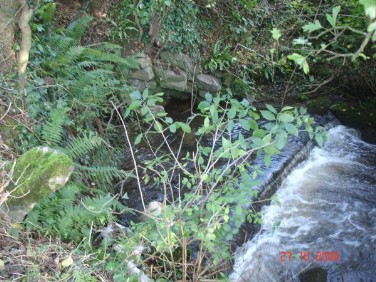
St. Comenath’s Well adjacent to Cragg Graveyard
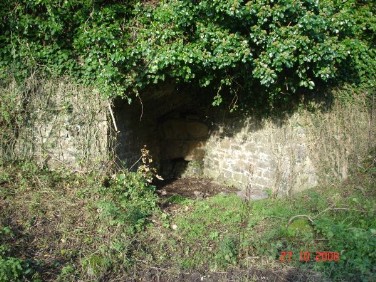
Remains of Limekiln near Cragg Graveyard
8. Knockannaneen Castle. Built by the McBriens in the 14th century. Stones of castle later used to build the Twiss mansion.
9. Cragg Castle. Seat of the O’Mulryan clan, members of which flourished during the reign of Queen Elizabeth 1.
10. Antiquities of Kilmastulla:
- Site of church used up to the 1950’s and graveyard still occasionally used. Served both Catholics and Protestants at various times.
- Grave of Rev. D. O’Brien one of the Knights of Malta who served as a chaplain to King Louis XVI of France.
- Bourne’s stables used by Bianconi coaches in the middle of the 20th century.
- Cnoc na Croíce or Hill of the Gallows, used by local tyrant Mac I Brien around 1738. Also known locally as a Croppy Grave.
11. Ring Fort: Prehistoric dwelling place at Kilmastulla, overlooking the Cement Quarry
12. Legaun: A 6 feet high standing stone at Coosane usually known as a Gallán.
13. Fulacht Fia: Ancient cooking place for pilgrims at Ballyhane (now excavated).
14. Schools:
- Present school built 1964.
- Previous school (now community centre) built in 1891.
- Lynch’s school built 1847.
- Hedge school at Carrigeen.
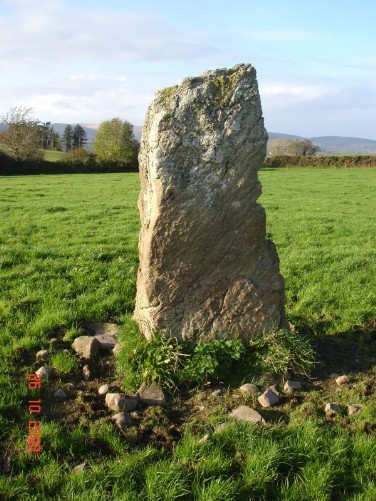
Standing Stone at Coosane
(known locally as a Legaun)
15. Carey’s Hotel: Favourite wayside inn of Daniel O’Connell and rendezvous for his supporters. Cooper’s Bar now stands on the same site.
16. Cragg House: Home of the Going Family, landlords of Cragg up to the early 20th century.
17. Railway Station: In operation since 1860. Line to Killaloe 1862-1944.
18. Kingstown: Nineteenth century village between Ballyhane and Annaholty. Important during the Indian Mutiny as a point of export for turf from the local bog.
19. Barracks:
- R.I.C. Barracks (near church) burned during the War of Independence.
- Garda Barracks in Birdhill Village (1927-1961). Originally built in 1720 as a hospital for retired nurses. Used as a shop and provisions store from 1905-27. Now Browsers Furniture Store.
20. Creameries:
- Co-op Creamery 1914-1987 (see separate article)
- Cleeves Creamery 1880-1921

